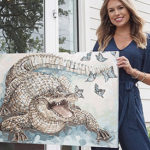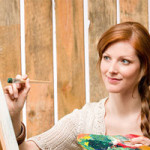Adding Art Into Other School Subjects Makes Learning More Fun
Art is Important as a School Subject, but Can It be a Teaching Tool too?

Although many schools cut arts first in their search to slash budgets because of the expense of art supplies (the answer is that they aren’t shopping at Jerry’s where all the deals are), recent studies have shown that exposure to art can help students grow academically. So in response to cutting art class budgets, many teachers are integrating art into other subjects to help students learn.
Not only have they found that teaching with art helps students raise their academic grades, but it can also boost self-confidence, creativity and school spirit.
So far, art integration has been showing positive results in schools because it taps into both left side and right side hemispheres of the brain while forming different interests and abilities all in the process of learning.
What does this art look like in, say a geometry lesson? One 4th grade geometry lesson had students examine the art of Russian artist Wassily Kandisky and imitate his paintings and extensive use of angles in their own artwork. Students used paint to make their art, then had to measure the angles used in both works of art and identify the types of angles used.

One student remade Van Gogh’s Starry Night with her biology notes.
“If you pick a subject area like science, social studies, math or literacy and you integrate it with an art form, what you do is connect the two and find ways to really integrate the two so they lean on each other,” says teacher Judy Klima of the Integrated Arts Academy of Burlington, Vermont. “When you engage hands-on and you are creating your own learning, you are deepening your level of understanding about a specific topic.”
Other examples of integrating the arts into other areas of learning include biology lessons where students drew realistic drawings based on the patterns found on leaf’s edges to learn about both the scientific qualities of leaves and the difference between realistic and abstract art. Other students performed dramatic skits based on what they had learned about the Revolutionary War.
Although many schools don’t have the commitment of integrating art into other lessons like the Integrated Arts Academy, many individual teachers across the country are making it their mission to mix art in with other studies such as math, science, history and literature. The goal is for students to collaborate and be able to use their minds to creatively explore the process of learning and growing into more well-rounded people who can think outside of the box.
And while art itself is still getting cut as a necessary class from many curriculums, we hope that the trend of art integration and innovative and creative teachers is one that continues to rise.





